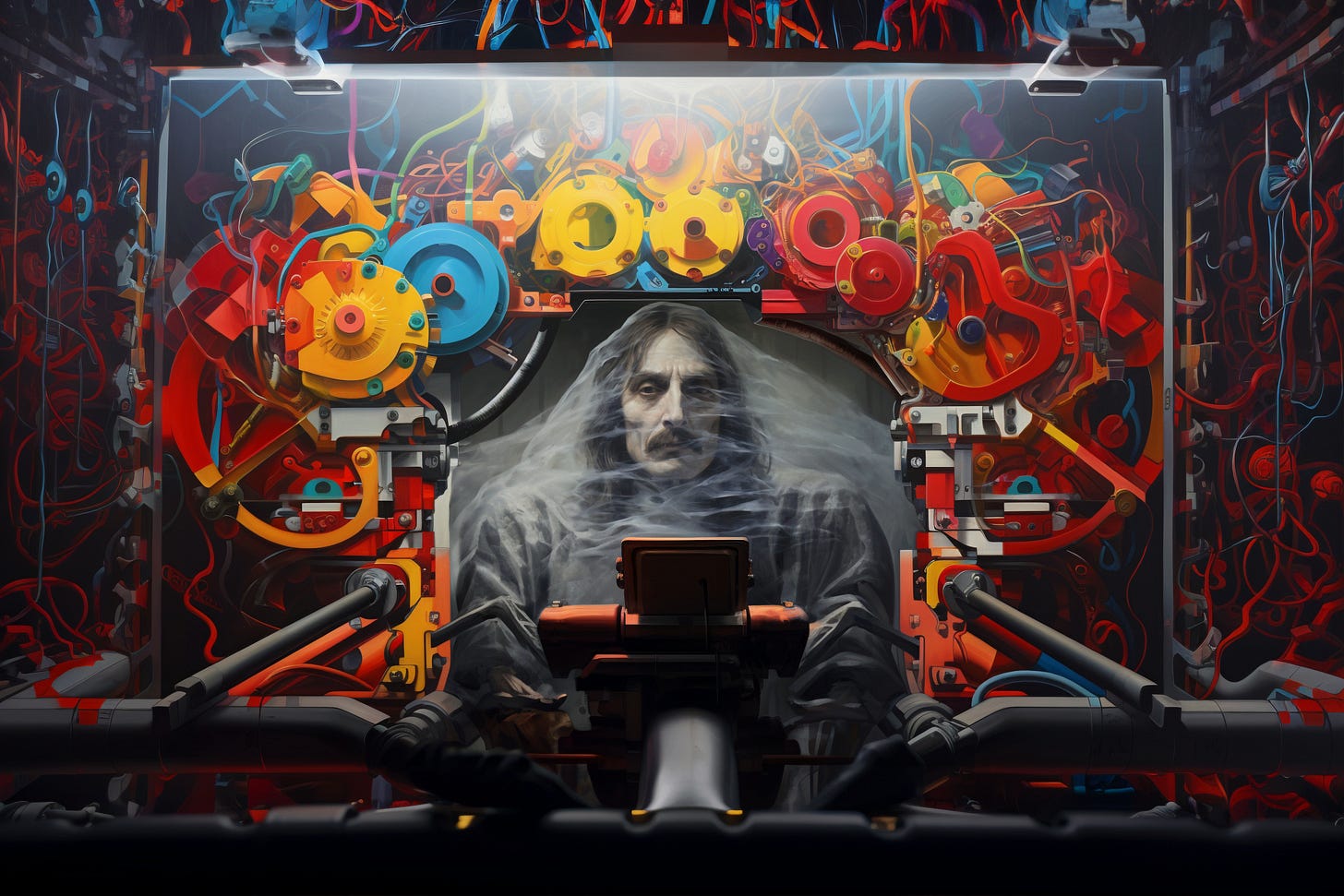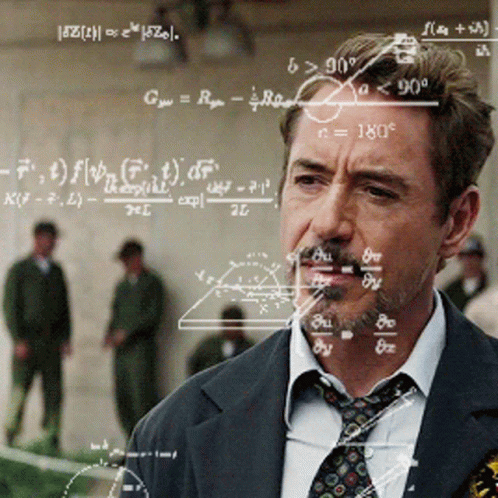String Theory
Parshas Ki Savo: Living with unresolved tension
We imagine history framed by a neatly stitched narrative. Empires rise and fall in a tireless cycle. Science and civilisation unfold like a bud into full bloom. Similarly, we envision our identity emerging as a cohesive story bound by a symbolic thread. The self evolves like a sprawling empire, weathering storms, expansion, and decay. Challenges in life are mere plot points en route to self-actualisation. Each small choice becomes a stroke on the epic canvas of who we are. Just as every war and plague lends meaning to history's grand arc, our battles become luminous marks etched into our self-conception. And as central figures in our own narrative, we internalise the idea of travelling along a cohesive upward trajectory.
This notion of an overarching progression, both personal and historical, owes much to the influential work of Georg Wilhelm Friedrich Hegel. Hegel's philosophy sees history as a continuous clash between opposing ideas. A thesis collides with its antithesis, forcing reconciliation between contrasting perspectives. This synthesis resolves friction and becomes the basis for the next cycle of dialectical tension and resolution1. Hegel thus envisioned historical progression as an ascending arc driven by ideological conflicts resolved over time. Standing atop the mountain built by this linear process, mankind can trace his past's broad contours. As individuals, we situate our personal stories amidst this epic historical framework, with everything pointing to a consistent progression.
But all of this sounds a little too neat, a little too tidy - like it was dreamed up in some sterile lab by milquetoast middle-aged engineers. The fact is that our subjective experiences lack cohesiveness. And for this reason, Hegel came under heavy pushback from a brooding Danish upstart named Søren Kierkegaard.
Kierkegaard felt Hegel's vision failed to acknowledge the lived complexity of the human condition. For Kierkegaard, authentic living meant embracing life's internal tensions instead of expecting them to disappear once subsumed in a generic, impersonal, overarching system. He believed Hegel's dialectical method failed to grapple with the everyday anxieties, doubts, and tensions people face. Humanity's inner being is forever torn between competing priorities, zigzagging like a poodle who just discovered espresso shots. Kierkegaard insisted we grapple with these paradoxes rather than smother them with a wet blanket of rationalisation.
But why does our existence ensure inward torment? Give a cow some sunlit grassland, and it will live out its day's content. But lavish a man with inexhaustible riches and his heart will still ache with unease. It isn't for nothing that Koheles, a meditation on eternal questions of life and faith, was written by Shlomo HaMelech. Here we have a man possessing wealth, power and intellect beyond belief, yet even he laments that "the soul is never fulfilled". Similarly, the Kuzari centres around a king searching for life's deeper truths. The message rings painfully clear: There is no earthly cure for the profound tension simmering at our very core. What causes this distinctly human malaise?
Man is a unique synthesis of two divergent elements: an eternal soul emanating from the divine realm and a finite body composed of base physical matter. God fashioned Adam's body from clay but breathed life into it. Regarding this, the Zohar teaches that "the one who blows, blows from Himself". Our spiritual essence is thus intimately grounded in God. The soul yearns to reunite with its source, to bask in its transcendent origin's radiance. Yet the body jerks and tugs in the opposite direction, only recognising the immediate. This fundamental conflict, baked into human nature, generates acute tension that leaves our species forever restless.
Enlightenment philosopher René Descartes conceived man as "a ghost in a machine," with the spiritual soul and mechanical body entirely disconnected. His dualistic approach still permeates modern thought, sustaining our incomplete view of a humanity severed from its spiritual roots. Yet Judaism sees man as a fused singularity, a synthesis of intertwined soul and body. We wander the earth, neither angel nor beast, a hybrid blend of base and sublime. And it is this contradictory nature, this conflicted yearning, that fuels our species' most remarkable acts of creation and destruction.
So, how must we approach our inner dissonance? The Torah provides a framework for directing man's conflicted impulses. In navigating our religious experience, we must strike a healthy equilibrium between competing forces. Rav Kook explores this idea by analysing a verse in this week's Parsha. The passage in question admonishes the Jewish people for not serving God with proper intention:
...you [the Jewish people] did not serve the Lord, your God, with joy and with contentment when you had an abundance of everything.
{Devarim 28:47}
Here, we are rebuked for lacking both Simcha (joy) and Tov Levav (contentment). What is the difference between joy and contentment – are they not simply synonyms for happiness? Rav Kook answers that these two states, joy and contentment, stem from contradictory evaluations of our divine service. Our experience of contentment flows from a sense that serving Hashem is natural for us, the purest expression of our divine essence. On the other hand, Joy erupts at our realisation that we are tuning into something far beyond ourselves when performing Mitzvos and learning the Torah. We are overwhelmed by a transcendent encounter with the ultimate other.
This dialectic between joy and contentment in worshipping God is a microcosm of the broader existential struggle discussed thus far. As complex beings containing both earthly and divine sparks, human nature inherently involves contradictory impulses and dual identities. The notion of man as a fusion of soul and body parallels the dynamic interplay between our finite selves and infinite potential.
Rav Kook's insight into the delicate interplay between self-contentment and the disruptive joy of growth offers cutting insight. Our multidimensional nature ensures innate friction, an ongoing tug of war. But the answer is not to sweep all the messiness under the rug. Just as a guitar requires strings pulled taut from opposing ends, the human experience relies on creative friction generated by conflicting forces. Instruments with loose, unstretched cords cannot produce notes. The band must be tightened and drawn in two directions to reach an optimal tightness. This tension between the poles enables the instrument's full musical potential.
The key, however, is balance. Too loose, and no music emerges; too tight, and the strings snap. We must walk the tightrope between certainty and doubt, security and risk, the finite self and infinite potential. We generate the creative spark that ignites original thought and novel solutions by embracing our contradictions.
Our world is full of friction, aching for resolution. We seek peace but find only restless urgency, our days saturated with paradox. Yet there is beauty in this in-between state, this eager anticipation of a redemptive future. We can enjoy this temporal existence as an engaged couple savours the sweet longing before marriage. There is beauty in this not-yet-there, this immersed striving, this dwelling in tension. Our destination awaits, but we linger in the tender vulnerability of a world that needs healing. We yearn for messianic wholeness even as we discern splendour in broken vessels. Amidst the mud and mire, we uncover glimmers of the world's original light. The road is long, but the destination is assured; our fractured world moves slowly toward redemption.
Good Shabbos, and Keep Pondering!
Hegel never actually used the terms “thesis”, “antithesis”, and “synthesis” in his works. These terms were actually coined by Johann Fichte, a German philosopher who was one of Hegel’s contemporaries. However, Hegel did use a similar structure to advance his philosophy. This structure is often referred to as the “dialectical triad”







So beautiful! I cannot get over your writing talent!
Four things:
1. I love the tension of the strings metaphor. It perfectly captures that idea of living with a balance and a tension between our worldly and divine pursuits.
2. I had to look up the word "milquetoast", so thank you for teaching me a new word.
3. Your images are the best art I've seen in a long time.
4. I think you should put your essays together in a book, if one is not already in the works. Images must be included!